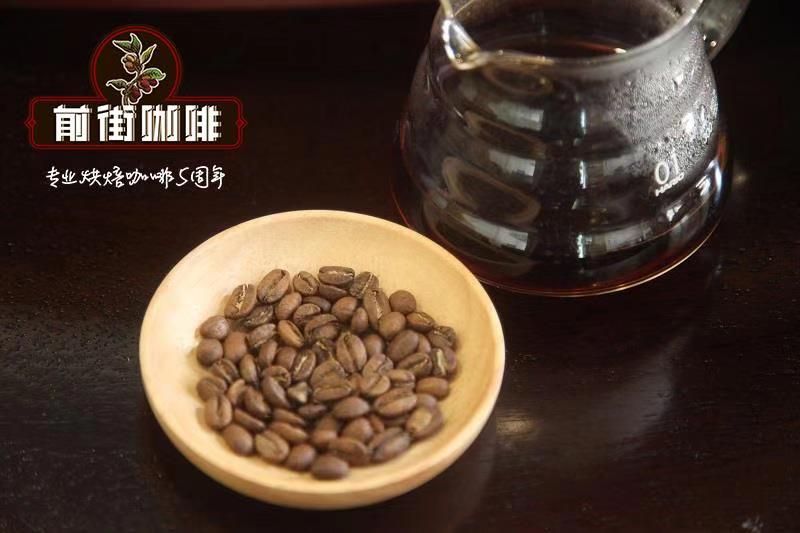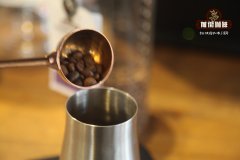You know how to choose coffee beans is the most suitable for you | how to choose coffee beans

Professional coffee knowledge exchange more coffee bean information please follow the coffee workshop (Wechat official account cafe_style)
Ask everyone about their hobbies, and coffee is a common answer. But everyone's tastes are different, so if you want to pursue a perfect cup of coffee, you have to start with yourself.
Different producing areas, different sizes of coffee beans, different roasting methods all have an impact on the taste of the final coffee, so let's take a look at how to choose the coffee beans that suit us.
Coffee bean selection principle: choose fresh and high quality coffee beans
Look at the appearance
Look at the shape of the coffee beans. When selecting coffee beans, you can judge whether the coffee beans are good or bad according to the shape of the roasted coffee beans, there can be no bad beans mixed in, and pay attention to the normal beans mixed with high-quality beans. Coffee beans that can brew delicious and mellow coffee must be large, fat, uniform, uniform in size and free of color spots. As long as you watch carefully, these are not difficult to distinguish. No matter what kind of baking degree, the appearance of good beans is full, the size of beans is basically uniform, and the color is oily and bright. On the other hand, if the color is dull, the size of beans is uneven, there are a lot of broken, broken grains, etc., then the quality of beans is poor.
Smell it.
In addition to the characteristics of the beans themselves, fresh ones should smell fragrant, which has little to do with the degree of baking. This is not to say that shallow baking smells light and deep smells strong. Stale beans smell light or tasteless, even with mildew, soil fishy smell, soot smell and other peculiar smell, of course, the smell is not to mention for the time being.
Rely on the sense of touch
Judge by touch and hearing, that is, by hand contact. We can squeeze the beans with our hands. When the beans crack, the sound is crisp, on the contrary, the sound is dull, indicating that the coffee beans are damp when they absorb water or keep them for too long. We can use our teeth to bite open the beans to identify. Beans also make a sound when you bite open, and you can also listen to the sound to judge. At the same time, the second purpose of biting is to observe whether the internal and external colors of the beans are unified. If the appearance is the same, it means that the bean is roasted evenly and of good quality; on the contrary, it is inconsistent, indicating that the baking is uneven at that time, and the smell and taste of such beans must be poor if they are ground into powder for brewing coffee.
Look at the date
Check the production date. Try to choose coffee beans that are baked within 1 month or 3 months.
The bean culture period is generally as short as 1-2 days. After this stage, trickle-filter coffee can be made. If it is used to extract Espresso or cup test, the bean culture period should be appropriately extended, such as 5-7 days.
The latest fresh period, calculated from the end of the soybean cultivation period, is about 2 weeks.
The relatively fresh period starts from the end of the "latest fresh period", which is about 1 month.
The disposal period starts from the "relatively fresh period" of about 4 weeks, about one month; after the disposal period, the flavor of coffee decreases sharply and the freshness decreases. The shelf life of coffee beans is generally about 1 year, the earlier the better.
Select varieties and places of origin
Choose Arabica or Robusta beans
Choose Arabica beans. The varieties of coffee beans are mainly divided into two kinds: Arabica and Robusta. Generally speaking, Arabica coffee is rich in aroma, and it is easy to be affected by different altitude, soil, climatic conditions and other factors to affect the growth and flavor of beans, thus creating a special flavor in different producing areas. But everything is not absolute, and some people just like Robsta or the mixture of Arabica and Robusta. This mainly depends on personal preferences.
In addition, it is worth mentioning that you can also ask the seller the origin of the coffee beans and the characteristics of the coffee, you can try it yourself, and finally choose your favorite coffee beans.
Baking degree selection
We know that coffee beans have different colors and flavors due to different roasting degrees. Dark beans are bitter, while light beans are sour. As the baking degree deepens and the bitterness increases, the sour taste will gradually disappear. We generally divide the baking degree into three categories: light, medium and deep, and the colors are light brown, brown, and dark brown in turn. You can choose according to your own preference.
Tanzania: fresh and sour taste
In order to make full use of his sour taste, the deep roasting of French coffee must be avoided. There will be a better sense of balance by baking in the city.
Manning: a strong bitter taste
Bitter coffee is deeply baked. In terms of the state of raw beans, special attention is also paid to the intensity of texture.
Colombian bourbon: a gushing and scattered fragrance
Residual in the mouth of the aftertaste, with a sweet escape, the higher the quality of beans, the more people can feel this sweetness.
Cameroon beans: think of strong, full of personality
Round beans usually contain two seeds in flat beans, because only one round seed is brewed, so the aroma is strong and the yield is rare.
Brazil: balanced taste.
This is a wonderful balance between sour and bitter taste, no matter how much baking is done.
END
Important Notice :
前街咖啡 FrontStreet Coffee has moved to new addredd:
FrontStreet Coffee Address: 315,Donghua East Road,GuangZhou
Tel:020 38364473
- Prev

Where to buy coffee machine in Italy? is it cheap to buy coffee machine in Italy? top brand of coffee machine
Professional coffee knowledge exchange more coffee bean information Please pay attention to the coffee workshop (Wechat official account cafe_style) in fact, in today's society, coffee machine can not be regarded as an uncommon machine and equipment, many companies will buy one or two coffee machines, most companies now advocate a user-friendly management mechanism to provide employees with coffee makers
- Next

Starbucks caramel macchiato how to make _ Starbucks caramel macchiato raw material ratio and taste introduction
Professional coffee knowledge exchange more coffee bean information please follow the coffee workshop (Wechat official account cafe_style) Latte macchiato Macchiato Latte macchiato is a coffee beverage;the name means stained or marked milk.Marked as in an espresso stain on the milk used.It is a play onEspress
Related
- Beginners will see the "Coffee pull flower" guide!
- What is the difference between ice blog purified milk and ordinary milk coffee?
- Why is the Philippines the largest producer of crops in Liberia?
- For coffee extraction, should the fine powder be retained?
- How does extracted espresso fill pressed powder? How much strength does it take to press the powder?
- How to make jasmine cold extract coffee? Is the jasmine + latte good?
- Will this little toy really make the coffee taste better? How does Lily Drip affect coffee extraction?
- Will the action of slapping the filter cup also affect coffee extraction?
- What's the difference between powder-to-water ratio and powder-to-liquid ratio?
- What is the Ethiopian local species? What does it have to do with Heirloom native species?

